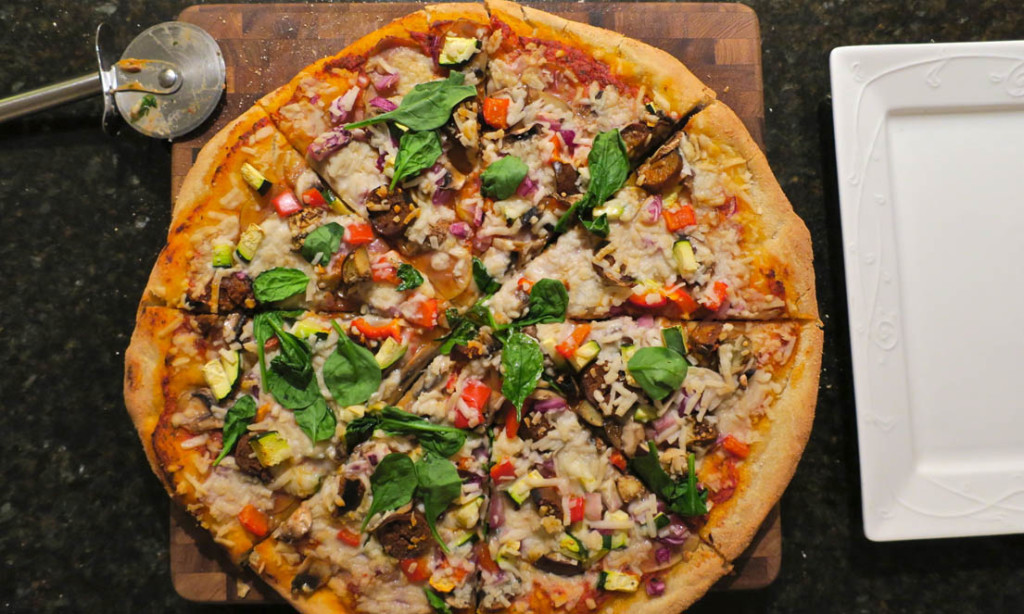Story courtesy:
Written by: Julia Murray
Spring in the mountains. A time of choice (ski gear or bike gear?) and of lessening the load (swapping the long undies for banana hammocks), but what about our food? It gets easier to sustain ourselves with lighter meals once the warmer temperatures kick in, but spring is also the perfect time for a shift in perspective with the way that we eat. There are good reasons to cut down on our meat consumption, or ditch it entirely and move to a plant-based diet.
PLANET HEALTH
As a ski town, we hold our snow-capped mountains and epic glacial landscapes close to our hearts and beneath our bases, and we are all well aware of climate change. Exact estimates vary on just how much of our global greenhouse emissions come from animal agriculture (anywhere from 14 to 51 percent of total global emissions), but if you factor in deforestation, water use, species extinction, waste, and greenhouse gas emissions, there is little doubt that it is one of, if not the biggest threats to our planet today.
PERSONAL HEALTH
Numerous studies, including one from the Harvard T.H. Chan School of Public Health, have found that consuming a healthy plant-based diet is linked with a substantially lower risk of type 2 diabetes. Cutting out meat and replacing it with healthy grains, legumes, vegetables, and fruits can also help fight heart disease and some cancers while leading to clearer skin, more energy, less body fat, better digestion and faster recovery times. So, maybe it’s time to switch out that après ski beef burger to a veggie one and move closer to a whole food, plant-based lifestyle. But where to start? Right here, right now.

6 STEPS TO HELP YOU EAT MORE PLANTS
1. GO AT YOUR OWN PACE
Some take it slow and some go right into it with a 30-day plant-based challenge. Usually, small steps are the way to make lifelong change. Vegan-ize one meal at a time, go vegan one day of the week, then two days, drink a green smoothie every day, or just make it a habit to eat a piece of fruit or a big salad before you eat your main meal. Add more plants, then keep adding them. It’s that simple.
Cutting out meat and replacing it with healthy grains, legumes, vegetables, and fruits can also help fight heart disease and some cancers while leading to clearer skin, more energy, less body fat, better digestion and faster recovery times.
2. GET INSPIRED
Educate yourself on all aspects of a plant-based lifestyle. Watch documentaries and YouTube videos, listen to podcasts, read blogs and go to vegan events and potlucks. Typically, people start cutting out animal food because of the array of health benefits and later realize they are saving at least one animal’s life each day. Then they think about the 10,000 square feet of decimated rainforest and 400,000 gallons of fresh water they save each year, just from switching out the meat and dairy for plant alternatives. Will you do it for your health, the animals, the environment, or all three?
3. FOCUS ON WHAT YOU’RE GAINING
Instead of depriving yourself of the foods you like, try substituting a new vegan product each week. If you need that ice cream, cheese, or yogurt, test out the brands that make vegan alternatives—there are so many out there! Get creative in the kitchen, or go out to vegan restaurants (download the Happy Cow app to find restaurants nearby). Cashew cheeze, nutritional yeast, tempeh burgers, tofu scramble, coconut ‘bacon,’ and bizarre fruits and veggies are all part of the flavourful and nutritious journey. Basically, look forward to the super nutritious foods that you get to ADD to your diet, rather than focusing on the foods you’re taking way. Have fun with it.
Basically, look forward to the super nutritious foods that you get to ADD to your diet, rather than focusing on the foods you’re taking way. Have fun with it.
4. COUNT NUTRIENTS NOT CALORIES
Ditch the calorie counting mentality and instead focus on the quality. Whole plant foods have all that you require in the macronutrient ratio that your body needs to perform—vitamins, minerals, fibre, beneficial carbohydrates, protein and some fat. If you eat unprocessed, plant foods in their natural state, your brain will be triggered to feel full before you overeat, just because of the sheer volume (packed with nutrients) these foods take up in your stomach. Simply put, you can EAT MORE when you base your diet on plant foods.
5. STOCK YOUR KITCHEN
Plant foods are some of the cheapest in the grocery store—stock up on beans, legumes, potatoes, rice, bananas (freeze for smoothies and banana ice cream), greens, fruit, rice pasta, tomato sauce, nuts and seeds. The more you have readily available, the more you will eat. Need a fast-food snack? Try bananas, hummus and veggies, date hemp balls, apples and almond butter, chips and guac, tempeh sandwiches… and the list goes on.
Legumes, grains, nuts, seeds, and even fruit and veggies have ample protein for us to thrive. Plant protein is easily digestible and comes as a full package with nutrients, fibre, vitamins, phytonutrients, minerals and water as well.
6. DITCH THE PROTEIN MENTALITY
Surprise, surprise! Protein is found in more foods than most people think. Legumes, grains, nuts, seeds, and even fruit and veggies have ample protein for us to thrive. Plant protein is easily digestible and comes as a full package with nutrients, fibre, vitamins, phytonutrients, minerals and water as well. Getting your protein from meat and dairy means you’re also consuming saturated fat and (potentially) hormones and antibiotics as well. From a young age, we are told that we need to focus on getting enough protein, but the truth is, we can easily get more than enough by eating whole plant foods.
Julia Murray is an Olympian and a Registered Holisitic Nutritionist. Check out her plant-based bloghookedonplants.ca for recipes, resources and links to the videos, podcasts and articles she mentions above.








